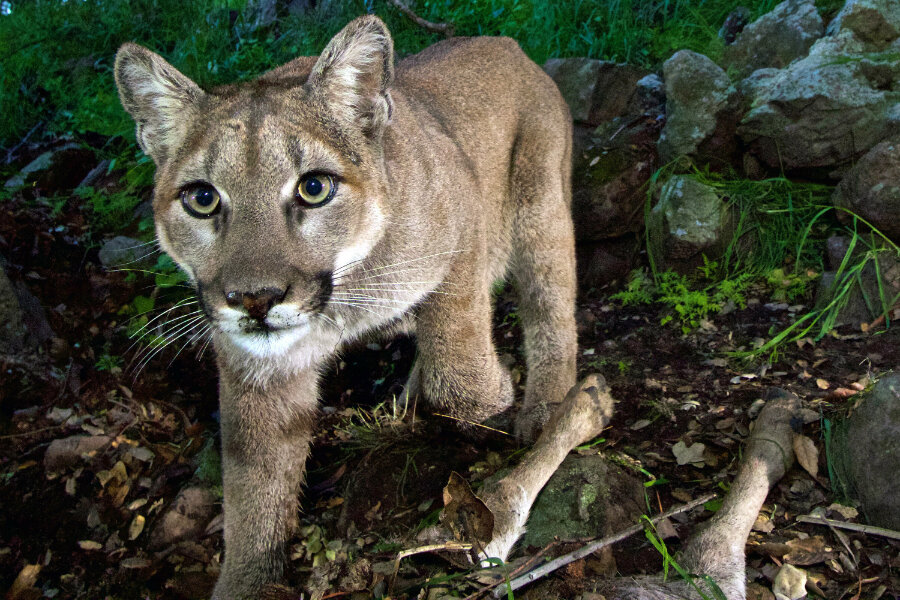Why Southern California's mountain lions could disappear
Loading...
Some of Southern California's beloved mountain lions could soon be extinct unless something is done to diversify the population, scientists say.
The population of mountain lions living in the Santa Monica Mountains now faces a 99.7 percent chance of extinction, due to loss of genetic diversity.
According to the National Park Service, which has placed GPS tracking collars on more than 30 mountain lions in order to study their behavior, the mountain lions of the Santa Monica Mountains have relatively low genetic diversity compared to other mountain lions in the rest of the state, largely due to being fenced in by roads. The researchers found that the small population size has led to infighting, inbreeding, and health problems.
"Many of these phenomena, including very low genetic diversity and close inbreeding, have only been previously seen in Florida panthers, an endangered and completely isolated population of mountain lions," Seth Riley of the National Park Service, who has worked on similar mountain lion studies, said in a press release. "In our case, the fact that lions in the Santa Monica Mountains are completely surrounded by roads and development likely lead[s] to behaviors that would be rare or nonexistent if normal population and social processes could occur."
In his own research, Dr. Riley observed unusual behavior in the cats in the Santa Monica Mountains, including inbreeding between fathers and daughters, and members of the species killing each other, even siblings, offspring, and mates.
In order to assist the movement of lions so that they may intermingle with other populations and increase genetic diversity, a collaborative of wildlife agencies including the National Wildlife Foundation have started the Liberty Canyon Wildlife Crossing project. If completed, the project will result in an animal crossing bridge across Highway 101, one of the major state highways that cut the animals' natural habitat in half. The project is slated to cost $50 million, but will help many species, not just mountain lions, cross the highway safely.
Wildlife corridors such as this one have become a popular solution to helping animals live a natural life – hunting, roaming, and mating – despite urban sprawl. They also cut down on animal-related car accidents, since animals are not longer forced to cross large highways as frequently in search of food.
Statewide, the mountain lion population has actually improved since the 1960s, when a bounty program to kill lions considered a threat to livestock rearing came to an end. According to the California Department of Fish and Game Services, the population has rebounded since 1970: from 2,000 then, to between 4,000 and 6,000 today.
Still, in southern California particularly, the mountain lion faces many threats due to human encroachment. The ability to expand its habitat is vital to the population's survival.
"The long-term survival of a mountain lion population here depends on their ability to move between regions to maintain genetic diversity and overall population health," the National Park Service said in a statement.








